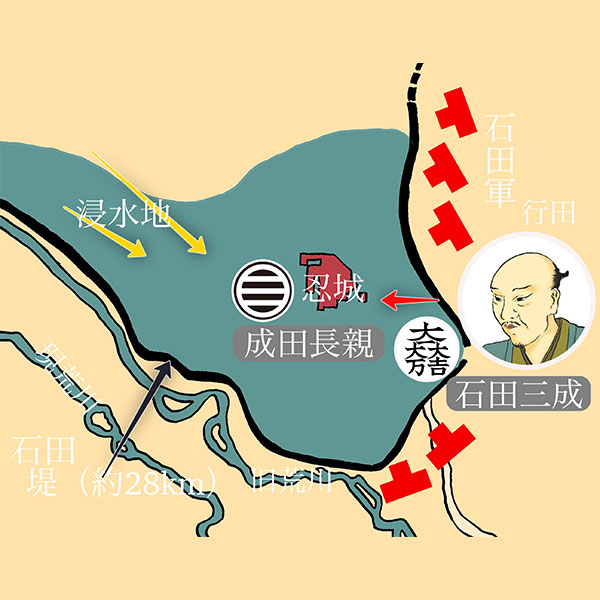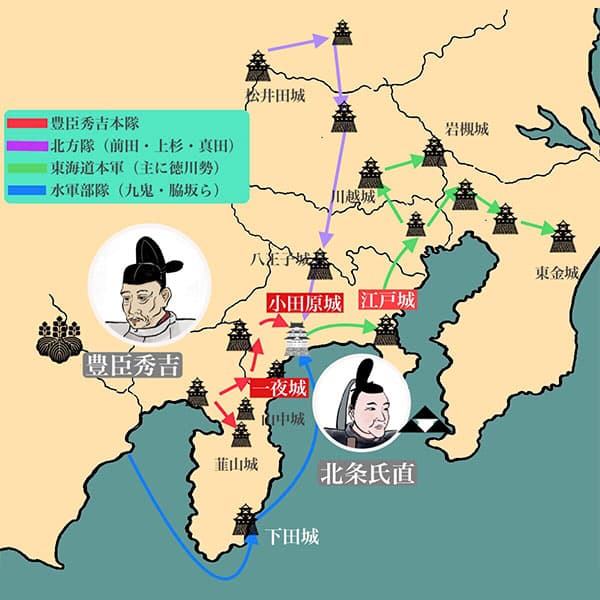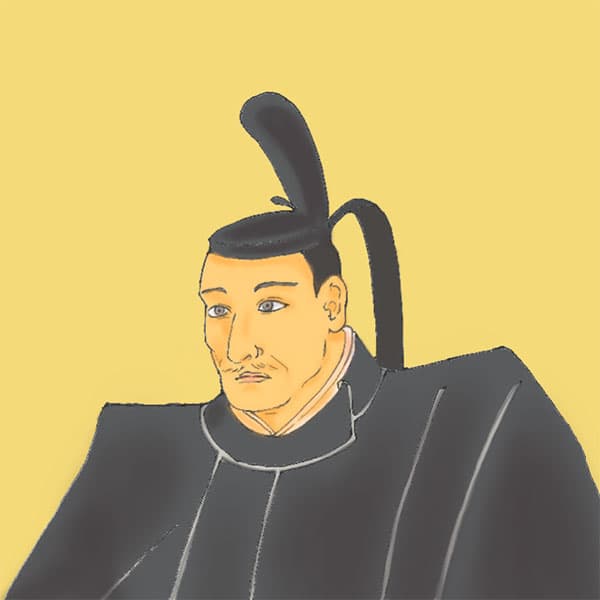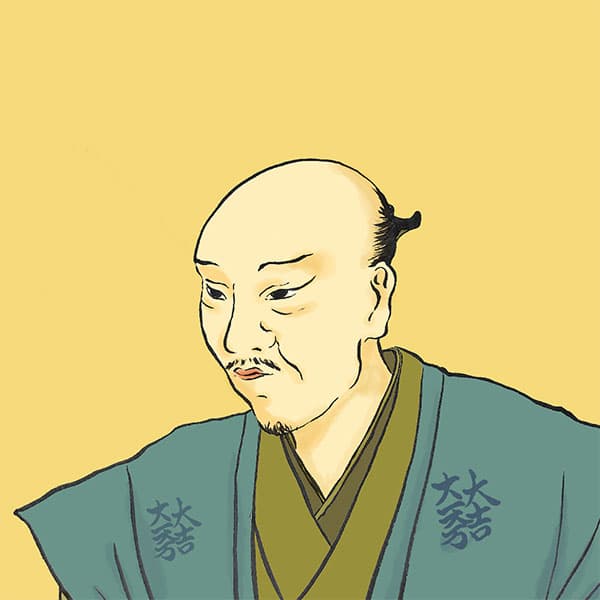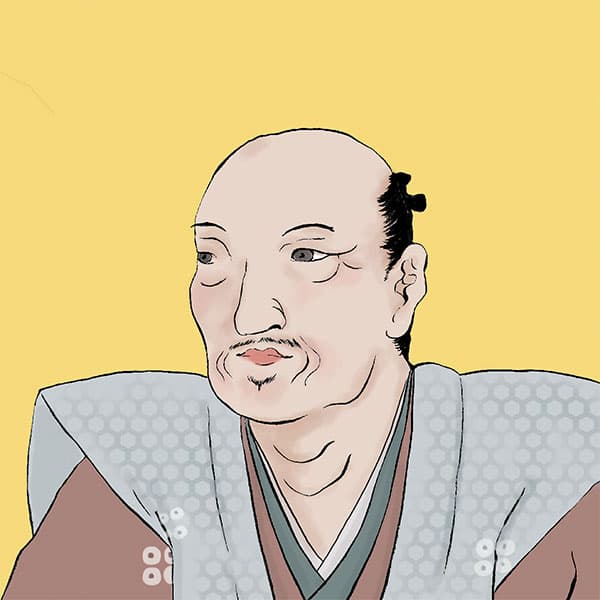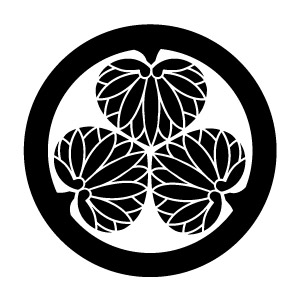- Oshi clanA transportation hub close to Edo
- Oshihan was a post town on the backroads of the Nakasendo road, and was also a transportation route using water transport from the nearby Tone River. Because it was close to Edo, the shogunate also attached great importance to it, and the feudal lords and feudal lords continued to be the lords until the end of the Edo period.

OshijoGyoda City, Saitama Prefecture
| Other name | floating castle, turtle castle |
|---|---|
| castle construction | 1479 |
| address | 17-23-1 Honmaru, Gyoda City, Saitama Prefecture |
- Access to Oshi Castle
- 15 minutes walk from Gyodashi Station on the Chichibu Railway Chichibu Main Line.
HISTORYOshi Castle, one of the 7 famous castles in Kanto
Oshi Castle is a flat castle that existed in Gyoda City, Saitama Prefecture. The name Oshijo comes from the fact that this area was once called ``Musashi Province Saitama District Shinobi''. It is also famous for surviving Hideyoshi's water attack, and the attack on Oshi Castle was made into a movie in 2012 with the title ``Nobo no Shiro.'' Let's unravel the history of Oshi Castle.
- History of Oshi Castle from its construction to the Edo period
- Oshi Castle is said to have been built by the Narita clan during the Bunmei era in the middle of the Muromachi period. The Narita clan was one of the samurai groups that had ruled this area since before the Kamakura period, and it seems that the reason for the construction of the castle was that they fought with the Shinobi clan belonging to the Ogidani Uesugi clan for supremacy over this area and won. . The castle's structure takes advantage of the vast swamps and natural embankments dotting the alluvial fan between the Tone River to the north and the Arakawa River to the south, and it became famous as an impregnable castle that never fell during the Sengoku period. By the way, it is said that when seen from a distance, the castle appeared to be floating in the swamp, which is why it was nicknamed ``Floating Castle.''
The Narita clan, who built Oshi Castle, fiercely opposed the Hojo clan when it expanded its influence into the Kanto region, but when Uesugi Kenshin invaded the Kanto region in 1559, the Narita clan became obedient. was shown. However, Uesugi Kenshin defected after holding the inauguration ceremony as Kanto Kanrei at Tsurugaoka Hachimangu Shrine. As a result, in 1574, Uesugi Kenshin besieged Oshi Castle and set fire to the castle town, but Oshi Castle held out.
The name Oshijo became famous during the siege battle that took place during Toyotomi Hideyoshi's pacification of the Kanto region in 1590. Ishida Mitsunari, ordered by Toyotomi Hideyoshi, besieged Oshi Castle in an attempt to capture it. At this time, the lord of the castle, Narita Ujinaga, was holed up in Odawara Castle, so he made Ujinaga's uncle, Yasuki Narita, the castle's lord, and in addition to about 500 samurai and ashigaru, there were also miscellaneous soldiers, farmers, and townspeople. Records of 3,000 people holed up in Oshi Castle are recorded in books such as ``Oshi Castle War Chronicles.'' In addition to Mitsunari Ishida, Yoshitsugu Otani, Masaie Nagatsuka, and Masayuki Sanada also participated in the Battle of Oshi Castle. This situation was also depicted in the 2016 taiga drama "Sanada Maru". Mitsunari Ishida built the Ishida Embankment, which was 28km long, in order to flood Oshi Castle with water. In the 2012 movie ``Nobou's Castle,'' a scene is depicted in which the Ishida embankment is cut and the castle is attacked by water, but in reality, the water attack ended in failure, and while Oshi Castle endured. Odawara Castle fell first. This battle made the name ``Shinobi no Floating Castle'' famous nationwide. - Oshi castle older than the Edo period
- When Tokugawa Ieyasu established the Edo Shogunate, Ieyasu's fourth son, Matsudaira Tadayoshi, was assigned to Oshi Castle and established the Oshi clan (100,000 koku). Expansion work on Oshi Castle began in 1639, and after extensive construction by 1702, it became a castle suitable for the domain office.
The castle town of Oshijo flourished as a post town on the back roads of Nakasendo, and as a distribution route using the water transport of the Tone River that flows nearby. In addition, the castle town of Oshijo has been famous as a ``tabi production center'' since the late Edo period. Because of this connection, it is also the setting for the TV drama "Rikuo."
In the Meiji era, clans were abolished and prefectures were established, and for a time ``Oshi Prefecture'' was created, with the prefectural office located in Ninomaru, but after that, Oshi Prefecture became Saitama Prefecture, and Oshi Castle became an abandoned castle. As a result, most of the structures within the castle were demolished and the site was turned into a park.
After the war, a baseball field and other facilities were built in the park, but in 1988 the Gyoda City Folk Museum opened. At this time, the third floor tower was reconstructed as part of the museum using a reinforced concrete structure based on the ``Bird's Eye View of Oshi Castle'' and other documents. In addition, some of the earthworks still remain in the park as they were back then. In addition, the Chatan Gate is located at Soganji Temple in Kazo City, and although it is unclear which gate it belongs to, a castle gate in the style of Korai Gate was relocated to the side of the local museum's parking lot and still exists today. In 2017, it was selected as one of Japan's top 100 castles (number 118). - summary
- Today, Oshi Castle is a tourist attraction in Gyoda City, Saitama Prefecture, and the military commanders regularly hold performances there. Also, as it has been the setting for movies and dramas such as Nobou's Castle and Rikuo, it has become a place visited by many movie and drama fans. No buildings other than the gate remain from Oshi Castle, but you can view the materials inside the local history museum. In addition, the Ishida Embankment still exists for about 200 meters to the south of the park, so why not stretch your legs there?
Read about incidents related to Oshijo
Read stories about people related to Oshijo
History of the Oshi clan, with Oshi Castle as the domain office
| Domain office | Oshijo |
|---|---|
| old area | Musashi Province Saitama District Shinobu |
| stone height | 100,000 koku |
| Fudai/Tozama | Fudai |
| main lord | Mr. Narita, Mr. Matsudaira |
Oshi Castle is famous for Ishida Mitsunari's water attack. Tokugawa Ieyasu, who entered the Kanto region, gave 100,000 koku to his fourth son, Matsudaira Tadayoshi, and allowed him to enter the castle. After that, after passing through Tenryo, Ieyasu's blood relatives such as the Okudaira Matsudaira family and the Abe family entered the domain. Successive castle lords held important positions in the shogunate, such as roju.











